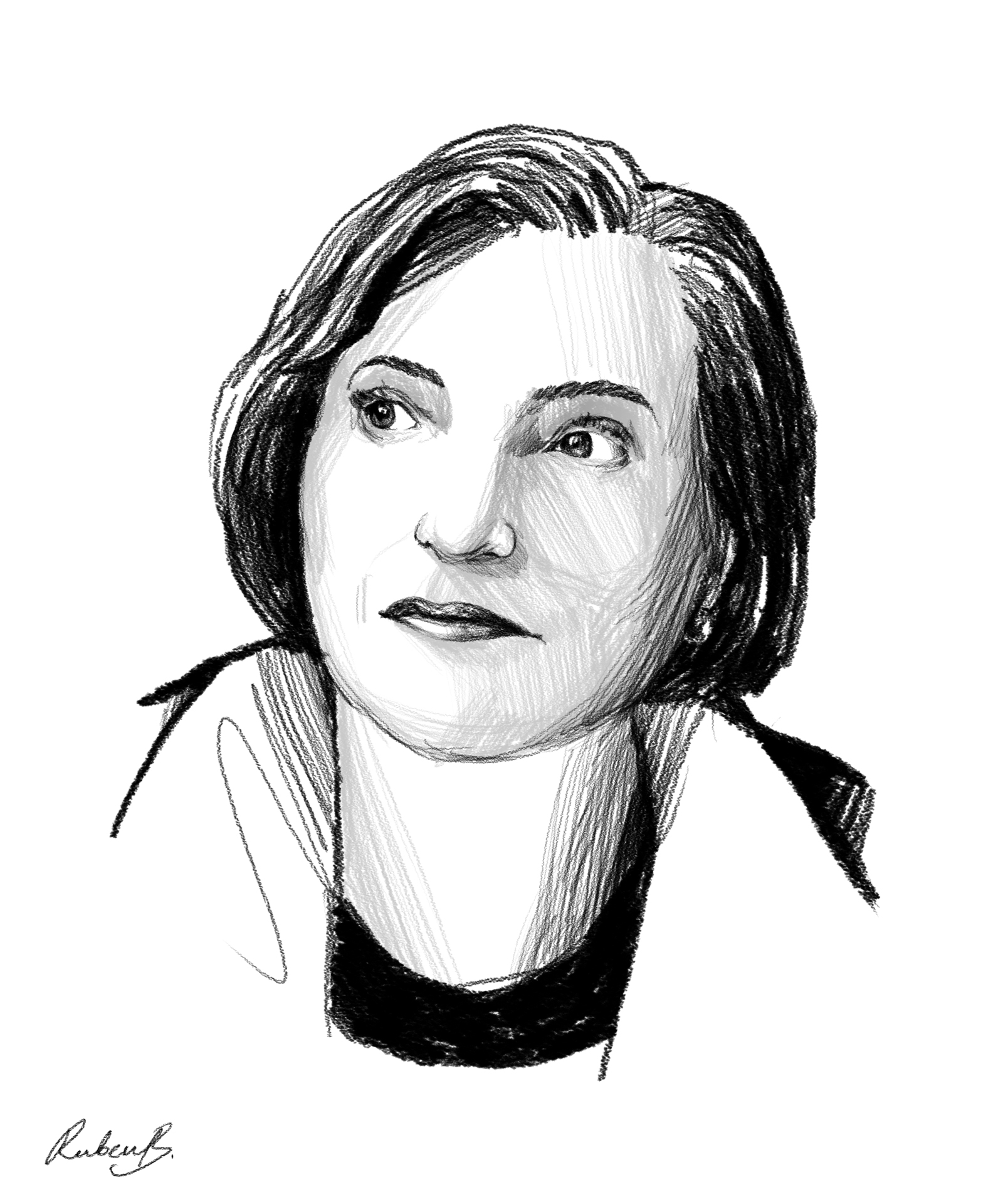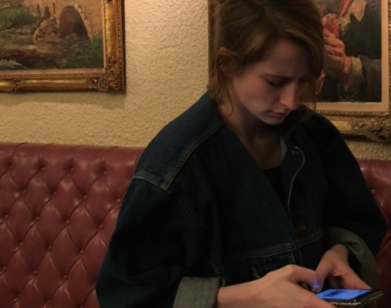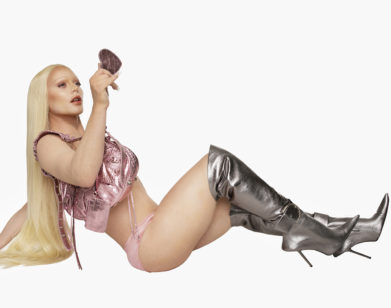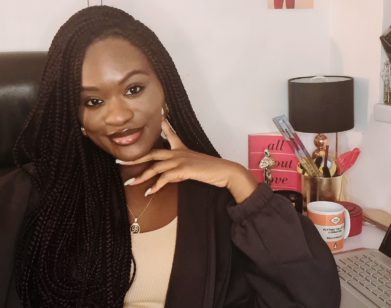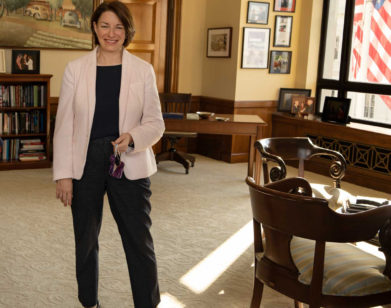Ask A Sane Person: Marjorie Garber Questions America’s Character
What does it mean to have character? What is national character? Presidential character? Personal character? Marjorie Garber’s new book, Character: The History of a Cultural Obsession, dissects this curious, elusive quality through a dazzling array of social, literary, and political reference points, and the question seems particularly pertinent in a time when the character of our nation seems to be undergoing a radical metamorphosis. Who are we? What do we want to be remembered for? What matters to us? Garber, a professor at Harvard whose insights on Shakespeare have redefined the discussions in many a lecture hall, is a fitting cultural scholar to lead us through these tragic times.
———
INTERVIEW: Where are you and how long have you been isolating?
MARJORIE GARBER: I’m in London. I was self-isolating for a while but am now going out from time to time (and wearing a mask).
INTERVIEW: What has this pandemic confirmed or reinforced about your view of society?
GARBER: That many people have short attention spans when things do not affect them directly.
INTERVIEW: What has this pandemic altered about your view of society?
GARBER: The converse of the above. The events of recent weeks and months have made it clear that people can pay close attention when things do affect them directly, and that many people are instinctively generous and selfless. Inventiveness, improvisation, collective energy, and commitment have all been at work across the country, suggesting that everyone can be an “essential worker” when it comes to building—or rebuilding—the world in which we live.
INTERVIEW: What is the worst-case scenario for the future?
GARBER: The re-election of Donald Trump. Continued heedlessness on the part of those not directly affected by the pandemic. An increasing divide between the ultra-wealthy and the poor, or those who are just managing to get by. Refusal to confront climate change. Too many people opting for combative denialism rather than informed reasoning. We need to restore faith and credibility in experts, including scholars and scientists, instead of rejecting or resisting ideas precisely because they are based upon research, comparison, and judgment. Short-term, it may be easier to shout than to think; long-term, this will make any functional society impossible to sustain.
INTERVIEW: What good can come out of this lockdown? Are there any reasons to hope?
GARBER: There are many reasons to hope, given the responses of front-line medical and other essential personnel. If we can recast our notions of human worth to value individuals who serve others, and recast our idea of “reality” to mean not television stunts but the economic, political, ethical, social, and global challenges we are facing, we will be moving in the right direction.
INTERVIEW: What has been your daily routine during this time?
GARBER: Reading, writing, walking. I’ve always written at home, so the lockdown has been less of a restriction for me than it might be for some others. I buy books and have them delivered, almost daily, for which I am very grateful.
INTERVIEW: Describe the current state of your hair?
GARBER: Longer. But I like it.
INTERVIEW: On a scale of 1 to 10, what is your level of panic about the current state of the world?
GARBER: I don’t think panic is helpful. I’m deeply worried, though. Maybe 8 or 9.
INTERVIEW: Do you think there is hope for true racial equality in the United States? What do you think is the first step in that goal?
GARBER: There has to be hope. One of the necessary first steps is broader education: learning, or re-learning, the history of racial inequality, racial protest, civil rights, and social justice in the United States, including the names and histories of individuals, groups, and social movements from earlier years. Attention is justly, and justifiably, now focused on recent events, and should continue to be so. But through books, newspapers, media presentations, artifacts, museum exhibitions, and class assignments, we need continually to remember and reassess the past. The resurgence of anti-Semitic images and phrases in recent years is an example of what can happen when memes replace memory. The injunction to “say their names” needs to include earlier victims of racial injustice, pioneering figures from the time of slavery, and activists who paid with their lives in support of civil rights. The Treasury Department’s delay in putting Harriet Tubman’s image on the $20 bill is one telling example of the disregard, at the highest level of government, for the cultural necessity of memory.
INTERVIEW: How can America work to ensure more equality and justice on a day-to-day level?
GARBER: “Work” is the key word here. Equality and justice require not only change, but constant vigilance. We have seen laws and best practices rolled back, or simply ignored, by governments both national and local. Courts, legislatures, and elected and appointed officials need to be constantly reminded of these issues and their importance.
INTERVIEW: Do you think protests are effective tools for changing the system? How does it make a difference in the long term?
GARBER: “Protest” today has become a term of art, and now covers a wide range of activities, from marches to vigils, spontaneous and planned gatherings, the painting of murals , the wearing of certain items of clothing, the carrying of printed or handmade signs. Social media has made such protests possible to organize on scales large and small. But the history of the United States is also a history of protest movements. Those who sat in at segregated lunch counters in the civil rights era were protesters, and were often attacked, verbally and physically, for their actions. Protests against the Vietnam War had powerful and far-reaching effects. Everything depends upon the sustained commitment of participants, beyond the “event.”
INTERVIEW: How do you personally channel your anger? Do you find anger to be a useful emotion?
GARBER: When I am feeling unsettled or angry, I write. Focused attention upon words, ideas, texts, and argument are, for me, the best way of retaining control, energy, and, indeed, hope for the present and the future.
INTERVIEW: Which young leaders of the moment inspire you?
GARBER: I was and remain an admirer of the young leaders who responded to the Parkland high school shooting with determination, organization, and sustained commitment. I am grateful for those who speak out against sexual as well as racial injustice, silencing, and brutality. I see how much Greta Thunberg has inspired others to become activists in the battle against climate change. I have also been enormously impressed by the social awareness and concern for the future voiced by very many of my students at Harvard, undergraduates and graduate students alike. I am confident that they are representative of a larger awareness and commitment among students across the nation.
INTERVIEW: What’s the next step after protests in the streets? Where does the righteous rage go?
GARBER: In our system, the first step is to seek reparative action from those in power—and therefore to work for the election and appointment of thoughtful and responsive leaders from a wide range of backgrounds and experiences. We have already seen encouraging changes of this kind at the electoral level, both national and local. But as we have also seen, government service is not the only path to power. Students and teachers, readers and thinkers, writers and artists all articulate new ideas and bring them to fruition through discussion and debate. And in a world increasingly focused on images and on visual and aural culture, art, poetry, and music are among the most powerful incubators of change.
INTERVIEW: Do you work best alone or in a group? Can you protest from home?
GARBER: It depends on the work. When I write, of course, I am alone. When I teach or lecture, I am in a group. All of these activities are fully engaging, and about connecting with an audience (of students; of readers; of listeners). And in each case, it is a dialogue, or—better—a conversation. Protest can be registered from anywhere. Again, it’s a matter of sustaining the commitment—and of remaining open to ideas, even challenging ones.
INTERVIEW: What thinkers have you taken comfort in of late and why?
GARBER: “Comfort” may not be the right word. I continue to believe that the arts and the humanities are essential to the health—and the intelligence and wisdom—of a free society. Consider, as one example, the strong support for government patronage of the arts by John Maynard Keynes, who led CEMA, the Council for the Encouragement of Music and the Arts (later renamed the Arts Council of Great Britain) in the midst of a world war. “I believe,” he wrote, “that a good small theatre, equipt with all the contrivances of modern stagecraft, is as necessary to the understanding of the dramatic arts, with their complicated dependence on literature, music and design, as a laboratory is to experimental science.” That a major economist in wartime should also be the main driver behind a national commitment to the arts and culture seems worth noting. Keynes built a theater at Cambridge; he participated in the revival and funding of “national opera and ballet” at Sadler’s Wells and Covent Garden, he thought that working to restore the theater to the place it held in Shakespeare’s time was “the outstanding characteristic of our own generation.” World-class museums in the U.K. still offer free admission; by contrast, comparable American museums—including some that, as a young student, I was able to visit regularly because they were free—now charge a hefty fee in order to support their own costs. To be able to stop by a museum for a moment to visit, or revisit, a favorite work of art has now become an expensive commitment. But things change everywhere. (Who knows what the full consequences of Brexit will be?) So if we want to take comfort—or, better, to derive energy for moving forward—perhaps we can do so by accepting the exhilarating challenges offered by contemporary artists, writers, directors, and performers (all “thinkers” about art, politics, and culture) in every part of the world. A vibrant example is the proliferation of Black Lives Matter street paintings across the United States, many designed and executed by inventive artists and curators.
INTERVIEW: If 2020 were a song, which song would it be?
GARBER: We’re only halfway through this interminable year. I’d hope for “We Shall Overcome,” but as of now it’s looking like “Gaslighter.”
INTERVIEW: Where did we go wrong? Like, what was the exact moment?
GARBER: There is always a moment before the “exact moment.” The election of Donald Trump? The failure of gun control legislation? The Citizens United decision that allowed for corporate money in politics? Abu Ghraib? Reconstruction and Jim Crow laws? The list, alas, is endless, as is the regression.
INTERVIEW: If you could stop time at one particular moment in your life, which moment would it be?
GARBER: Any choice here would erase or bracket joys, pleasures, and realizations that came afterward. For better and worse, time doesn’t stop.
INTERVIEW: What’s one skill we should all learn while in quarantine?
GARBER: Re-reading books.
INTERVIEW: What does our future as a nation look like?
GARBER: Epidemiologists, climate scientists, politicians, sociologists, economists, artists and writers—many are eloquent, but few are optimistic. It’s deeply worrying, and past trends (as I’ve noted above) suggest a short national attention span rather than dedication to the hard, slow work of positive change. But the future depends on reversing those trends, and committing—as Americans have done before in times of peril—to working together.
INTERVIEW: What prevents you from giving up hope in the human race?
GARBER: People I love.
INTERVIEW: Who should be the next president of the United States?
GARBER: I will be voting for Joseph R. Biden Jr., and hoping—there’s that word again—that the processes of law and justice will be followed in the election, the tallying of results, and the timely inauguration of the president.

